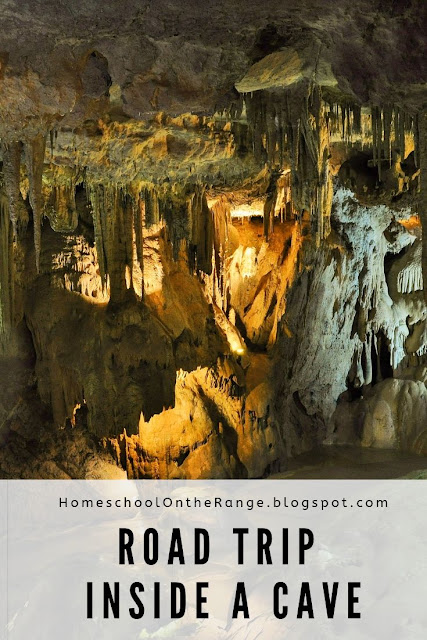So we learned that the first visitors of the caverns were….wait for it….Indians. After that it was the French fur-trappers. They were hanging out in the caves, building fires, staying dry and waiting for animals to be caught in their traps. That was back in the 17th and 18th centuries. We also saw carved messages that were put there before the Civil War. (The message in the photo is dated June 1858.)
Throughout the tour, we saw unique "natural architecture," learned about the animals that call this area home, and learned about a man named William Wilson. For nineteen years (1802–1821) the caverns were the home of William Wilson, known as the Pennsylvania Hermit. Following his sister's death, Wilson withdrew from society and wandered westward across southeastern Pennsylvania, settling in the caverns in 1802. He died underground in 1821. A little creepy...
Field Trip Resources
- Virtual Cave Tour
- Magic School Bus in the Bat Cave
- Journey to the Bottomless Pit & free lapbook
- Introductory lesson on caves (video)
- Underground Animals
- Cavernous Caves unit study
- Free Caves Lesson plans (younger kids)
- Free Caves Lesson plans (older kids)
- Create-a-Cave activity
- Bats informational pack (younger kids)
- Make Your Own Stalactites & Stalagmites
- scroll down for two short videos on caves
Make Stalactites and Stalagmites
Supplies :
- Two glass jars
- A saucer
- Woolen thread
- Either baking soda, washing soda or Epsom salts
Instructions :
- Fill both jars with hot water. Dissolve as much soda as you can into each one.
- Place the two jars in a warm place and put the saucer between them.
- Twist several strands of woolen thread together before dipping the ends into the jars and letting the middle of the thread hang down above the saucer. The ends can be weighed down with various small, heavy objects to keep them in the jars.
- The two solutions should creep along the thread until they reach the middle and then drip down onto the saucer.
- Watch what happens to the experiment over then next few days.
- Don’t forget to wash your hands when you’ve finished.
What's happening?
Over a few days the dripping water will leave behind the baking soda, forming a tiny stalactite (which forms from the roof) and stalagmite (which forms from the ground). With enough time these may eventually join to create a single column. Stalactites and stalagmites are columns of stone which form in underground caves. They are made from minerals dissolved in rainwater that slowly drips from the roofs and walls of caves.







No comments:
Post a Comment
Note: Only a member of this blog may post a comment.